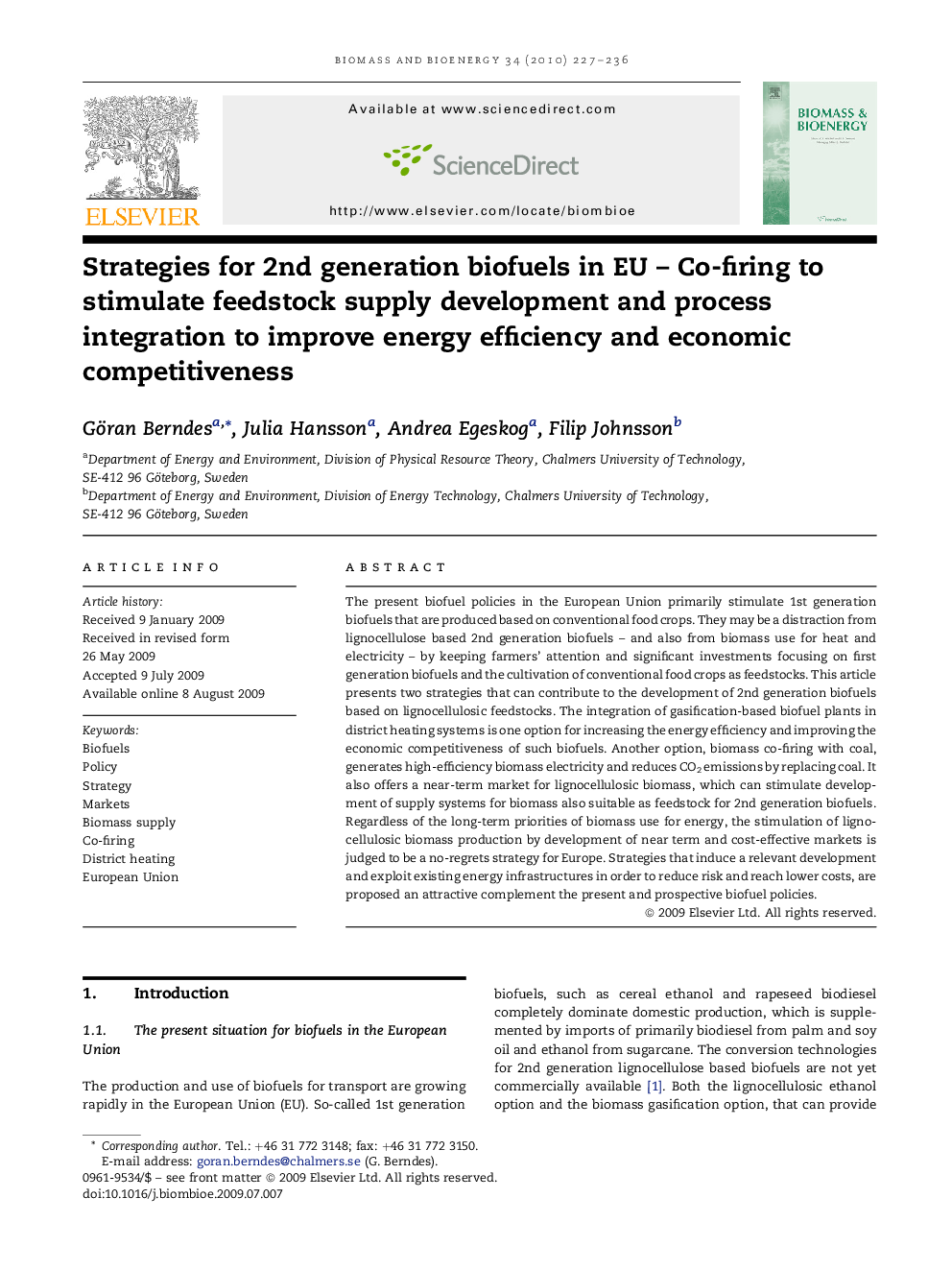| Article ID | Journal | Published Year | Pages | File Type |
|---|---|---|---|---|
| 678437 | Biomass and Bioenergy | 2010 | 10 Pages |
The present biofuel policies in the European Union primarily stimulate 1st generation biofuels that are produced based on conventional food crops. They may be a distraction from lignocellulose based 2nd generation biofuels – and also from biomass use for heat and electricity – by keeping farmers' attention and significant investments focusing on first generation biofuels and the cultivation of conventional food crops as feedstocks. This article presents two strategies that can contribute to the development of 2nd generation biofuels based on lignocellulosic feedstocks. The integration of gasification-based biofuel plants in district heating systems is one option for increasing the energy efficiency and improving the economic competitiveness of such biofuels. Another option, biomass co-firing with coal, generates high-efficiency biomass electricity and reduces CO2 emissions by replacing coal. It also offers a near-term market for lignocellulosic biomass, which can stimulate development of supply systems for biomass also suitable as feedstock for 2nd generation biofuels. Regardless of the long-term priorities of biomass use for energy, the stimulation of lignocellulosic biomass production by development of near term and cost-effective markets is judged to be a no-regrets strategy for Europe. Strategies that induce a relevant development and exploit existing energy infrastructures in order to reduce risk and reach lower costs, are proposed an attractive complement the present and prospective biofuel policies.
